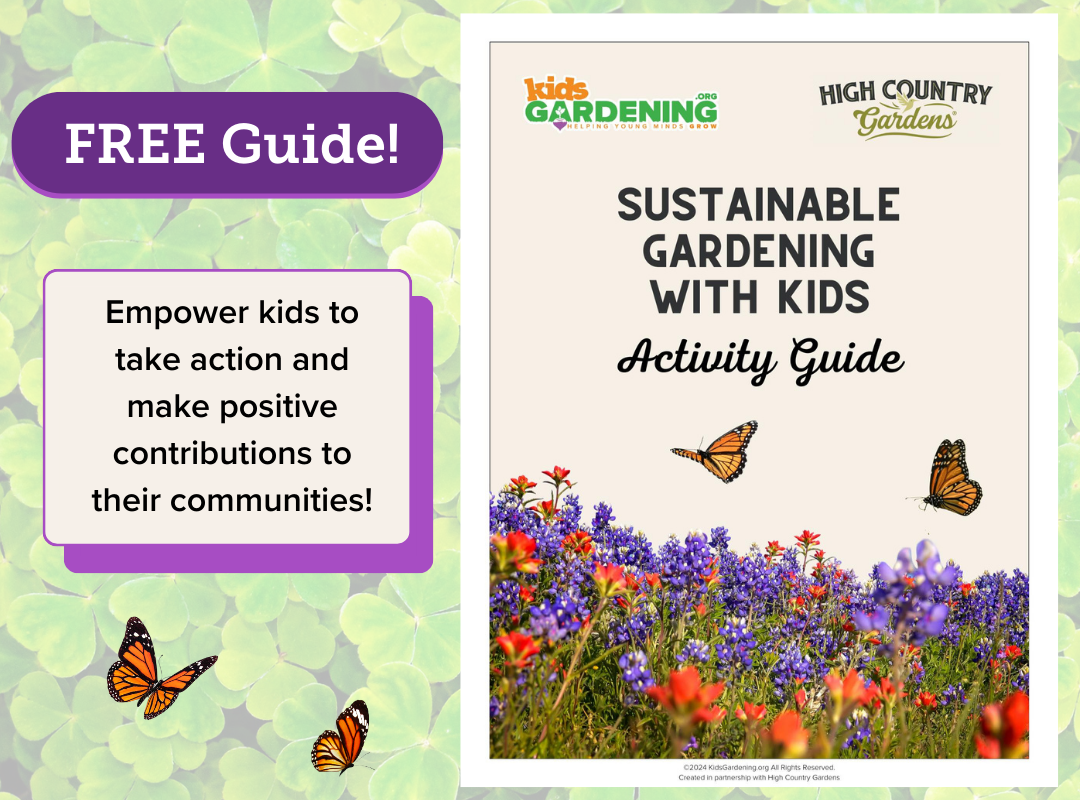Description
It can be difficult to get motivated about maintaining the yard and garden during the hot, dry summer months. There are definite dangers for young children during the most intense temperatures of the day. You can still find ways to avoid the heat and spend time together in the garden, but you might have to be a little creative.The most obvious answer is to either start your garden time a little earlier or end it a little later when the temperatures are cooler. Here are a few ways you can experience the garden with your family during these times of day. Just keep in mind that early morning and evening hours are prime mosquito time, so make sure you and your kids are adequately protected from bites with repellents and/or clothing.
Early Morning
Animals, too, suffer from long stretches of heat and many are more active during cooler hours. If you have hummingbird feeders or grow flowering plants with colorful, tubular flowers, early mornings are a good time for kids to observe these tiny birds and their behaviors. Song birds use the early morning hours for lots of communication. There are several good online field guides that feature the bird songs. Combining the songs with a picture is an excellent way to help kids remember the common names. Here is one example of an online audio guide.
Insects are sluggish and slower moving in the cool temperatures of early morning, making it a great time for some biological insect control—we're really talking about handpicking insects off plants. Have kids wear gloves and carry a small pail of soapy water. Show them how to hold the container below the insects they find and knock them off into the pail, or pick up insects from the ground and drop them into the soapy water. (The soap breaks the water's surface tension so the pests slip under quickly to drown.)An easy insect to have younger children look for is the squash bug. These brownish-grey insects attack pumpkins and winter squash plants, primarily (summer squash is less commonly attacked). The adults and immature nymphs are easy to catch and are usually found near the base of the plants. Squash bugs lay their distinctive, shiny, copper colored eggs in clusters on the undersides of leaves. With a little direction, children can carefully scrape the eggs from the leaves and destroy them. Destroying the eggs before they hatch is a great way to keep squash bugs controlled without using pesticides. Other pests that are easy for kids to handpick are tomato hornworms, cutworms, Japanese beetles, and slugs.
Morning is a great time to water plants in the garden. Less water is lost to evaporation during these cooler hours and any water that gets on plant leaves dries quickly as the day warms, helping to short-circuit fungus disease problems that can arise if foliage remains wet. And if your young garden helpers manage to water themselves as well as the plants, they’ll dry off quickly as well – no harm done!
While kids are armed with a watering can or hose, delight them and help beneficial insects at the same time by letting them make mud! Some insects, especially butterflies and some pollinator bees, prefer to drink at a mud puddle. Show kids how to let a hose or watering can spout drip just a bit on bare earth to form a damp, muddy spot where insects can stop for a sip. Mix a bit of sea salt or wood ashes into the mud to add micronutrients and minerals to their diet. Then keep an eye out to see who stops by for a drink.
Evening
Evening is the time to sample some of the garden’s most delicious olfactory delights! Add plants like moonflower vine, night-scented stock, and flowering tobacco (Nicotiana) to your landscape. Have children sniff their blossoms during the heat of midday; then again at dusk. They’ll observe that the most fragrance is released as the sun goes down. Ask your kids if they can think of why these plants give off their strongest perfume as darkness falls. The answer is that these flowers are pollinated by night-flying moths. Rather than relying on bright colors to attract day-flying bees, the white or pale-colored flowers use fragrance to lure pollinators in. Kids may be able to see this for themselves with a little evening garden exploration. Pick a calm evening to set up an observation post near some night-blooming flowers just as the sun sets, so there is still enough light to see by. Then wait and watch to see who comes for a flower visit!
Exploration after dark is always lots of fun! Give each child a flashlight and take them on a nighttime garden safari. They’ll see the garden and the creatures in it in a whole new light – pun intended! Nocturnal insects rest during the day and come out at night. Moths, fireflies, and mosquitoes are familiar, but other insects including various beetles, earwigs, and lacewings are also abroad at night. While some nocturnal insects, such as cutworms, are considered garden pests, homing in on them with a flashlight beam can still give a thrill to a nighttime “small game hunter.” And have kids keep an eye out for bigger creatures like toads that may be prowling the garden in search of a meal. Don’t let the heat put a damper on your garden fun this summer. Start early and end late! The early morning and evening hours offer lots of opportunities for continuing your enjoyment of the outdoors no matter how high the thermometer soars.



